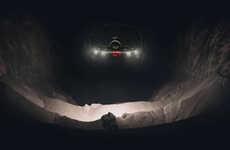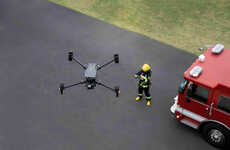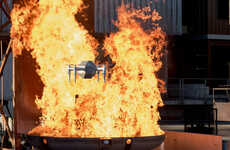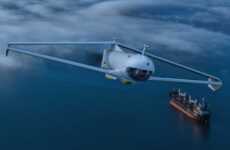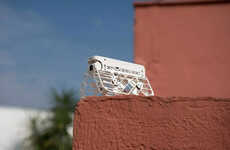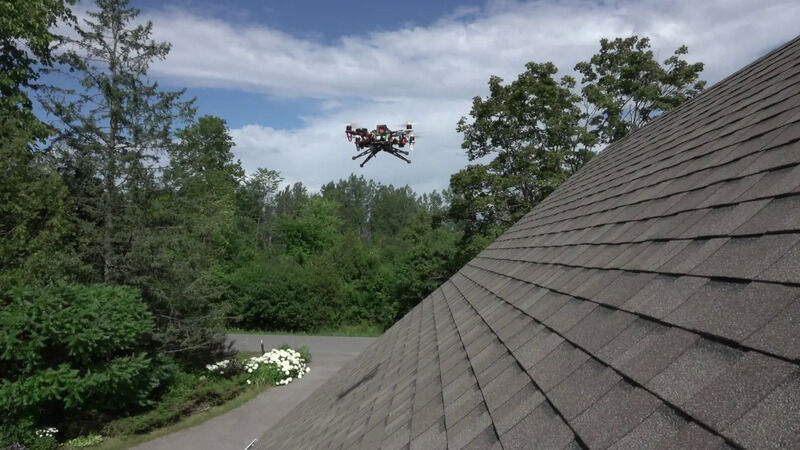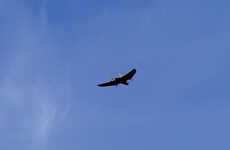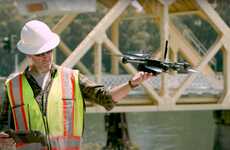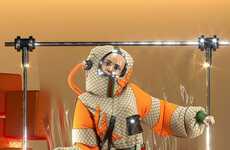
This Modified Drone Easily Lands on Roofs and Inclines Up to 60-Degrees
Michael Hemsworth — August 22, 2022 — Tech
References: ieeexplore.ieee.org & newatlas
This modified drone has been developed by a team of mechanical engineers at the University of Sherbrooke in Quebec, Canada as a solution for supporting uneven terrain or roof landings. The drone comes in the form of a DJI F450, which has been fitted with specialized landing gear and lightweight shock absorbers. These components allow the drone to absorb the kinetic energy when landing on a surface, while rapid thrust reversal capabilities allow for landing on steep inclines up to 60-degrees.
The modified drone has been successfully tested by the team in a variety of real-world environments and is capable of landing on roofs up to 60-degrees at a speed of nine-feet per second. This would position the drone well for use in emergency scenarios.
Image Credit: Université de Sherbrooke
The modified drone has been successfully tested by the team in a variety of real-world environments and is capable of landing on roofs up to 60-degrees at a speed of nine-feet per second. This would position the drone well for use in emergency scenarios.
Image Credit: Université de Sherbrooke
Trend Themes
1. Steep-incline Capable Drones - There is an opportunity to develop drones that are specialized for landing on steep inclines, which could be useful for emergency scenarios or for use in industries that require inspections or maintenance on uneven terrain.
2. Drone-based Search and Rescue - This modified drone's success in emergency scenarios presents an opportunity to develop and market drones specifically for search and rescue operations, potentially disrupting the traditional methods of rescue operations.
3. Shock-absorbing Drone Technology - There could be potential for developing and implementing shock-absorbing technology in drones for use in various industries or scenarios where a smooth landing is key, such as in filming, surveying, or mapping terrain.
Industry Implications
1. Emergency Response - The modified drone's success in emergency scenarios could disrupt traditional emergency response methods, presenting opportunities for drone manufacturers to partner with emergency response teams and agencies.
2. Infrastructure Inspection and Maintenance - Industries such as construction and energy, which require inspections and maintenance on uneven terrain or steep inclines, could benefit from using specialized drones that are capable of landing on these surfaces.
3. Film and Video Production - Drone operators and filmmakers could benefit from utilizing shock-absorbing drone technology for smoother landings and more stable filming in terrain with uneven or bumpy surfaces.
4.8
Score
Popularity
Activity
Freshness

